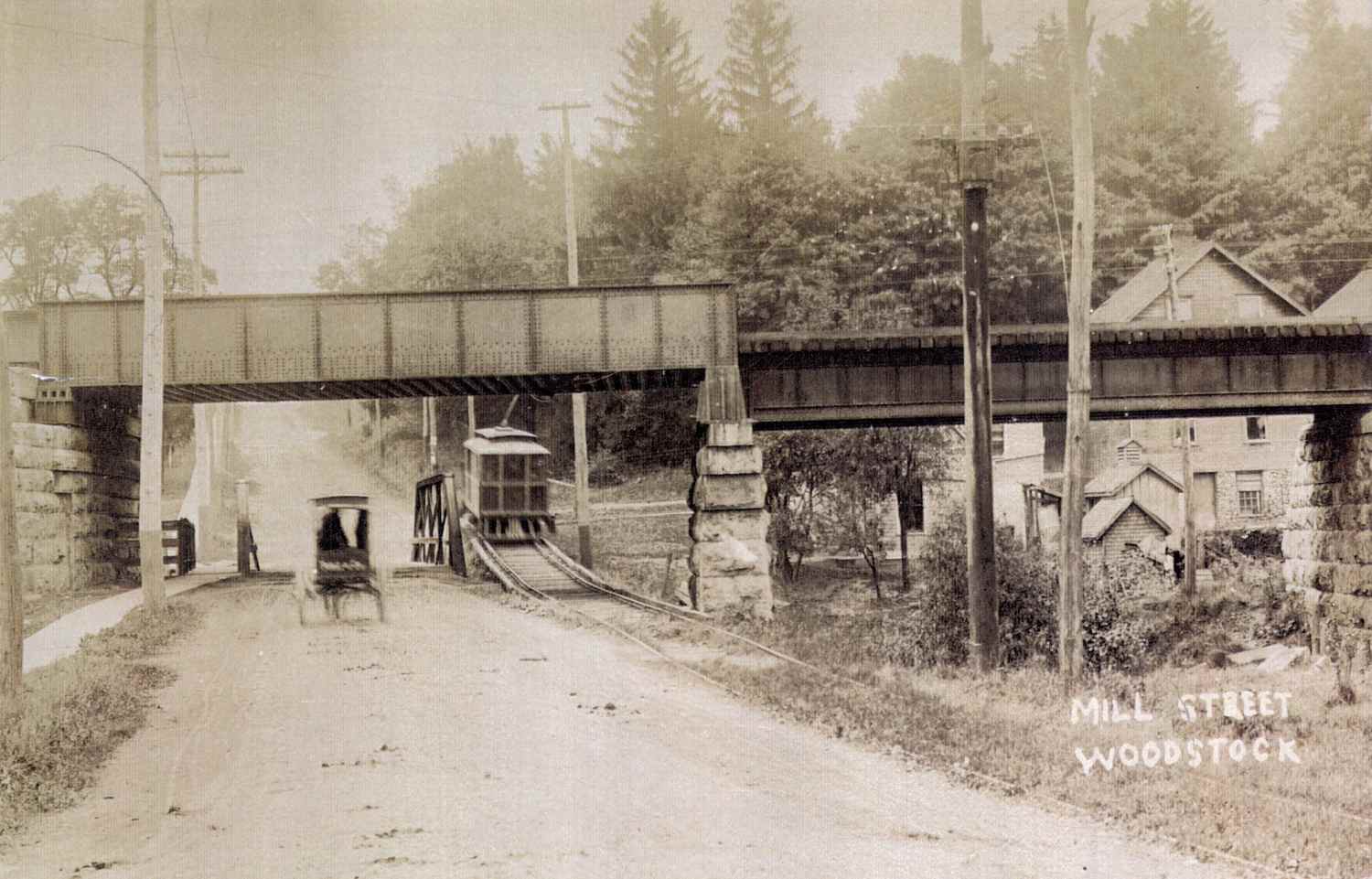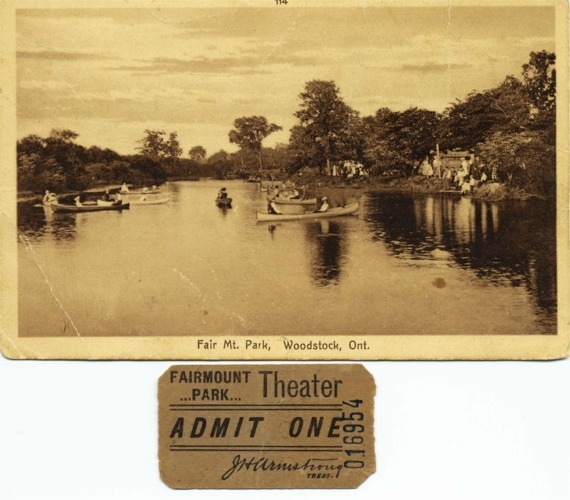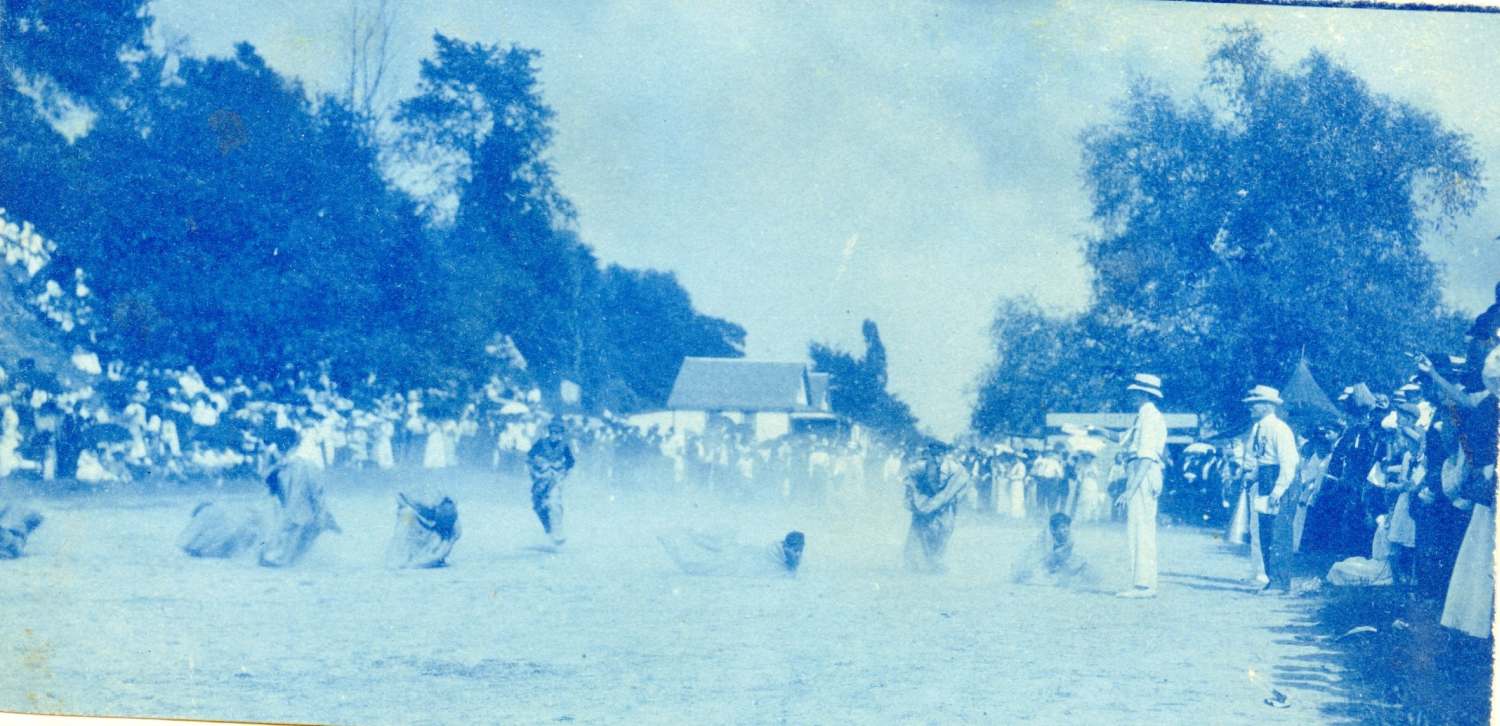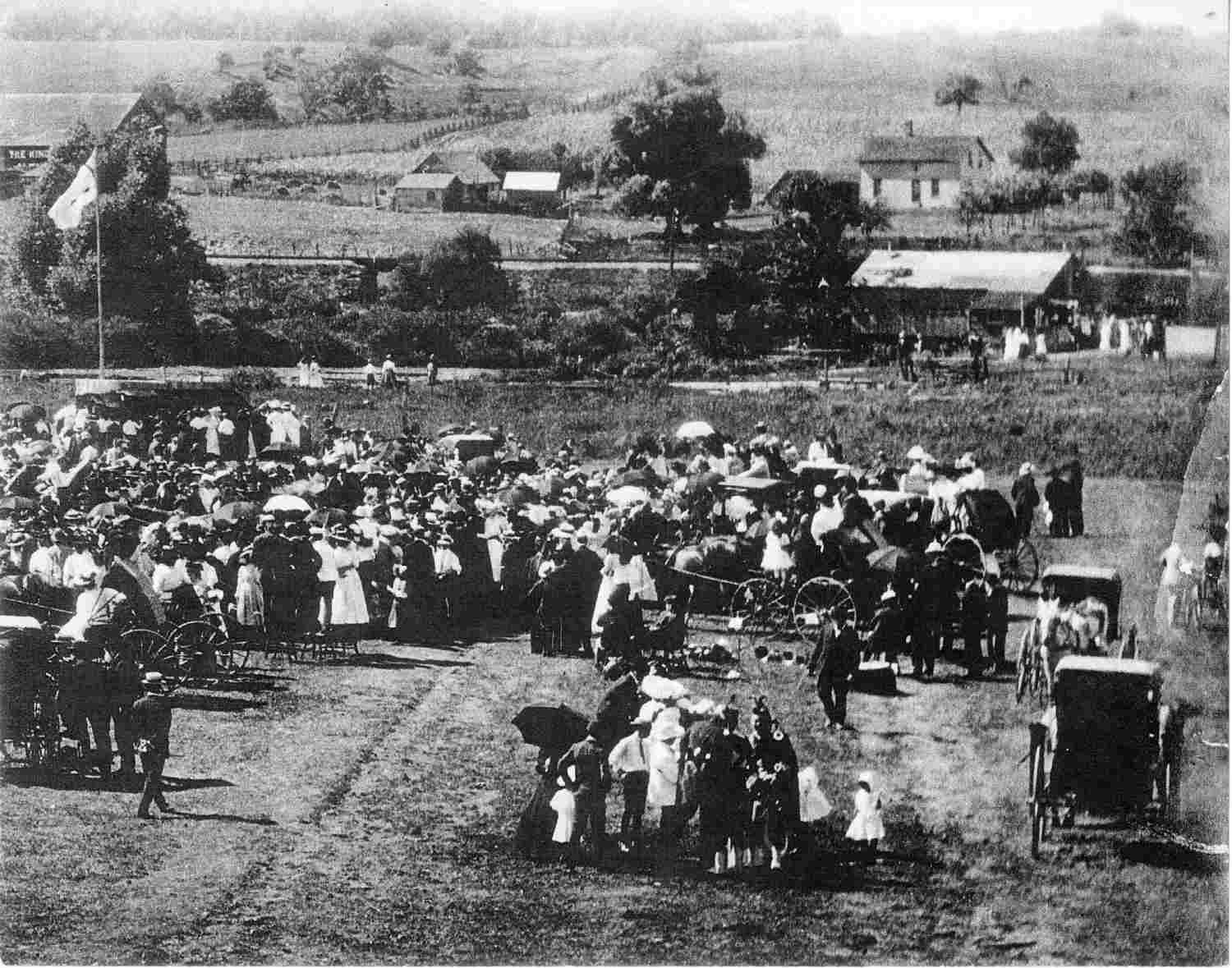A Beachville Destination: Fairmount Park
A Beachville Destination: Fairmount Park
In the year 1900, S. Ritter Ickes, under the corporate name Von Echa Company, began operation of the Woodstock Thames Valley and Ingersoll Electric Railway. The original track started in Woodstock at Wellington Street, then west along Dundas St., south on Mill St. (in order to take advantage of the existing underpass at the GTR tracks), west on Park Row, and then along the south side of Beachville Road, ending in the Village of Beachville. In 1901, the tract was extended to the Town of Ingersoll and in 1902, the line was extended to Norwich Avenue in Woodstock; making the entire length of trach 11.5 miles. The railway’s first trolley was christened “Estelle” and seated 24, with a small pot-bellied stove to keep passengers’ warm in the colder months.

Railway overpass on Mill Street and the Estelle trolley, Woodstock – [after 1899]. - COA oversized postcard No. 45
As a promotional scheme, in order to encourage riders on the line, the Company opened Fairmount Park along the Thames River, between Beachville and Woodstock. The park was named after a park in the Pennsylvanian home town of Mr. Ickes. Fairmount contained picnic facilities, a ball diamond, large swings and even a merry-go-round, as well as booths which sold hot dogs and soft drinks. It also had a boat house on the Thames River with canoe rentals and for a little while, a small steam boat. The park was also famously known for its large dance pavilion which held weekly dances, with a local orchestra, and plays by a summer stock theatre group. In the summer months, the trolley line also added a street car known as the “City of Woodstock” to mainly transport people between the city and the park. It was equipped with canvas blinds for protection against the sun, wind, and rain and cost passengers a nickel to ride each way.

Fairmount Park, Beachville and theatre ticket. – early 1900s. - J. Gruszka Postcard Collection No. 0703
A popular designation for local residents, Leola Giles, of Woodstock, noted an outing to the park in her diary on May 24, 1916: “Soon after dinner the soldier came and I got ready and we started up town. We were too late for the 2 o’clock car so we went into the Olympia and had a “Come back, twice” as he expressed it. It sure was a fancy dish alright. Then we went for a short walk before the 3 o’clock car came in. When we arrived at “Fairmount”, we went to the river but couldn’t get a canoe, so then we went flower hunting in the woods up back of the park and had a nice time – took some snaps and sat on the grass and talked and picked flowers etc. We came back on the 5:30 car.”
In addition, Fairmount Park was often used for large family and church picnics and was also the location for the Woodstock Old Boy’s Reunion in 1909. Held on August 11th, the day began with a Calithumpian parade that ended at the park, where a dinner was later served in a large tent set up on the grounds. The attendance for the event was estimated at about two thousand with the railway company handling seventeen hundred fifteen cent fairs from Woodstock and Ingersoll.

Sack race at Fairmount Park, Beachville. – early 1900s. - COA202 West Oxford Women’s Institute fonds Tweedsmuir History No. 1

Although the Von Echa Company had dreams of extending their electric street railway line to London and Embro, and then to an even larger network that would link Niagara Falls and Windsor, those plans never materialized. “While the line never lost money, receipts were barely high enough to cover expenses with little left over for maintenance and upgrading” (http://www.trainweb.org/ontariorailways/railwoo.htm). By 1912, the line had gone into voluntary receivership with a manager acting as a trust for the bond owners. With ridership declining, Fairmount Park was closed in the 1920s and, by 1925, the trolleys stopped operating. The tracks were eventually torn up in 1928.
